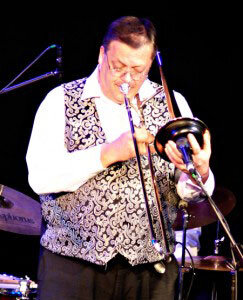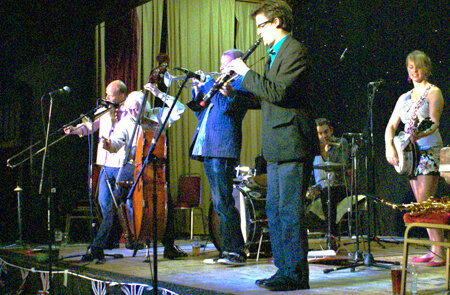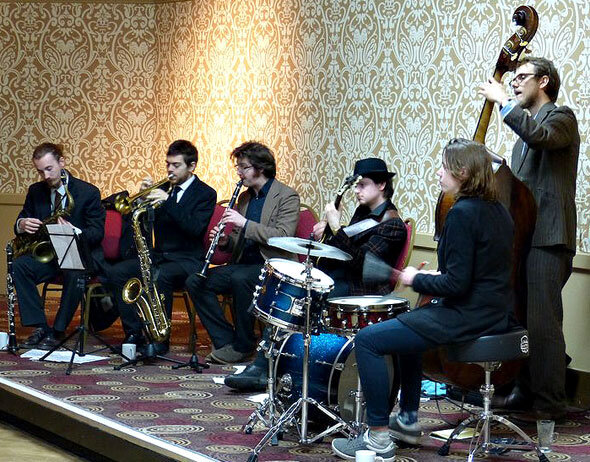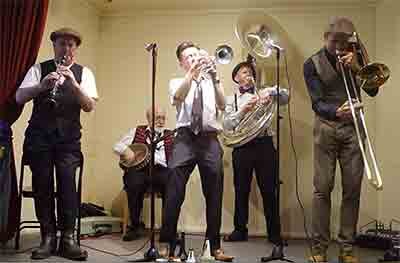Ever since I launched Jazz&Jazz back in 2009/10, and much more so recently, the current status and popularity of jazz, particularly in the UK, has been the subject of continual scrutiny and debate – especially among older fans and sometimes even older musicians – with lamentations such as those below, posted (14th August) on Facebook!

Ian Bateman
Facebook Lamentations!
Ian Bateman posted on Facebook just yesterday (14th August): “Three gigs scrubbed from my diary in 24 hours. I think the Job Centre beckons! From asking around other jazzers, it seems I’m not alone…”
Ian’s lament received a plethora of similar comments:
Ian Matthews responded: That’s sad, Ian. Do you reckon it’s a dip in interest in the genre, or that across the board the venues and promotors are folding and disappearing?”
Ian Bateman replied: “It’s due to a lot of
factors, Ian. Traditional jazz, where I’ve plied most of my trade, has almost disappeared from the theatres with the passing in a very short space of time of the great bandleaders that I worked for such as Acker Bilk, Kenny Ball, Humphrey Lyttelton and Terry Lightfoot. Their audiences are of a similar age group and of course are reducing in number too.
“I have other outlets in jazz and other genres that pay well and keep things interesting but its not enough to earn a living. In the main, jazz gigs are cheap compared to other genres. With a few exceptions, its in pubs and jazz clubs now who have a very low ceiling on what they can pay and it isn’t generally attracting the younger generation. Even so, venues are not staying the course – a couple of failures and they drop it – and we’re talking hundreds, not thousands of pounds – just shows how much jazz music has been devalued. Apart from a few festival organisers, there are no professional jazz promoters any more.”
Colin Erswell: “Being a jazz promoter I have the same problem getting an audience . I promote in the Medway Towns and we are really finding it hard to get young people to attend and the older audience don’t like driving at night , or find stairs hard to climb . This has been our worse year we have had in over 17 years of promoting . Just hope we can make it to the end of the year, we have great acts booked till November !!!

The Rich Bennett Band at the Autumn Jazz Parade, Hemsby, Norfolk, 2012.
Jazz in Dire Need?
Search this website and you will find a whole series of posts addressing these issues over the years, culminating in the most recent feature: Jazz in Dire Need! Announcing The Sad Demise of the Hemsby Jazz Parade!
I had thought to list more of these earlier Jazz&Jazz posts and the follow up forums but decided against it – because there are so many with extensive follow up debates!
The issues are regularly debated on my Facebook Page and on my Facebook Jazzers Group: (a closed group – genuine requests to join are viewed favourably) . But quite frankly, It would be preferable for your views and opinions to be posted in “Speak Your Mind” below this and any other Jazz&Jazz feature. On Facebook, comments are rapidly shunted down the list and forgotten.
The Core of the Issue
So lets zero in on the core of the issue. It’s based on the constant claim that jazz has had its day and that all that’s left are the residual bands of past decades. Nothing is farther from the truth! In fact we are witnessing a resurgence in jazz with the emergence of many new groups, but mostly a new generation of bands and young(er) musicians – all with their own emerging fan bases and preferred venues.

The Old Hat Jazz Band at The Winning Post
Many of them them are featured throughout this website. I’ll not link them here. I’d rather you took the time to search and find them.
So personally whatever the truth of the matter, I would prefer to hear less from ageing fans about the demise of jazz (no insult intended, I too am pushing on well beyond three score and ten). And fewer lamentations about the decline of jazz clubs – a natural consequence of their ageing supporters.
Let’s continue to support our established bands – they are still central to the jazz scene with a fantastic heritage to hand down to the emerging bands and stars. And let’s make every effort to back these emerging stars and the new generation of jazz bands – wherever and whenever possible.
It would be great to see younger bands and musicians starring regularly at our long established jazz clubs. But they can’t afford to do that for trivial, menial fees. They have their own jazz careers ahead of them. So perhaps fans should be prepared to pay more to see them! Then perhaps they would be prepared to reduce charges compared with their city venues, which although proliferating, are beyond the reach of so many jazz fans – both travel and cost wise.
Then perhaps lamentations about the demise of jazz would evaporate!

Doolally Tap
I make a point of getting to see and feature as many of our younger bands and musicians on Jazz&Jazz as possible. But like them and indeed, jazz fans, I too have to watch the purse strings. Any income received is sparse to say the least. Occasionally I receive donations to help the cause but not nearly enough to cover costs.
I am beginning a review of both the format and purpose of Jazz&Jazz. If I’m to achieve more for jazz, I feel it’s high time for an upgrade, a major overhaul and perhaps a change of direction for the site, with budgets based on a targeted income and features based on viability.
Finally Let’s Address that Old Trad Jazz Chestnut!
Where did Traditional Jazz originate? Many think in the UK!
Then how about this: “Trad jazz, short for “traditional jazz”, refers to the Dixieland and ragtime jazz styles of the early 20th century, which typically used a front line of trumpet, clarinet and trombone in contrast to more modern styles which usually include saxophones, and the revival of these styles in mid 20th-century Britain before the emergence of beat music.
“A Dixieland revival began in the United States on the West Coast in the late 1930s as a backlash to the Chicago style, which was close to swing. Lu Watters and the Yerba Buena Jazz Band, and trombonist Turk Murphy, adopted the repertoire of Joe “King” Oliver, Jelly Roll Morton, Louis Armstrong and W. C. Handy: bands included banjo and tuba in the rhythm sections. A New Orleans-based traditional revival began with the later recordings of Jelly-Roll Morton and the rediscovery of Bunk Johnson in 1942, leading to the founding of Preservation Hall in the French Quarter during the 1960s.
“Early King Oliver pieces exemplify this style of hot jazz; however, as individual performers began stepping to the front as soloists, a new form of music emerged. One of the ensemble players in King Oliver’s Creole Jazz Band, Louis Armstrong, was by far the most influential of the soloists, creating, in his wake, a demand for this “new” style of jazz, in the late 1920s and early 1930s. Other influential stylists who are still revered in traditional jazz circles today include Sidney Bechet, Bix Beiderbecke, Wingy Manone and Muggsy Spanier. Many artists of the big band era, including Glenn Miller, Gene Krupa and Benny Goodman, had their beginnings in trad jazz.”
So, Trad Fans, if you think yours is the only genuine genre, think again. And be prepared to give scope to innovations by the emerging jazz generation. But, having said that I must admit to an aversion to some of the latest modernist trends!
Recent related posts:
An Analysis of Jazz&Jazz YouTubes: Seeking Answers.
The Big Debate: (No Way) Is Jazz Facing “Doom & Gloom”?
The Big Debate: Is Jazz Facing Doom… or BOOM?
One For The Road and for Ian Bateman:
Peter M Butler
Editor & Proprietor Jazz&Jazz
(Photos & YouTubes © Peter M Butler, Jazz&Jazz)
Another article about Jazz where it refers to musicians and bands, as if they were the only main components of the music. Usually singers are included. One component is always omitted, and that is songwriters. It is bewildering how no-one can see this. It is understood in every other form of music, that is on the up. Why should a young singer just sing, and a young audience only listen to songs that are 70 years old. I know the answer is that they are beautiful songs. I am not arguing against that. I am saying there needs to be more songwriters writing in the style of the Great American Songbook, so the music is being continually refreshed. Without the new songs, Jazz IS dead. I think I am fighting single handed to try and save jazz by writing new songs. Is there anyone else out there writing songs in that style.